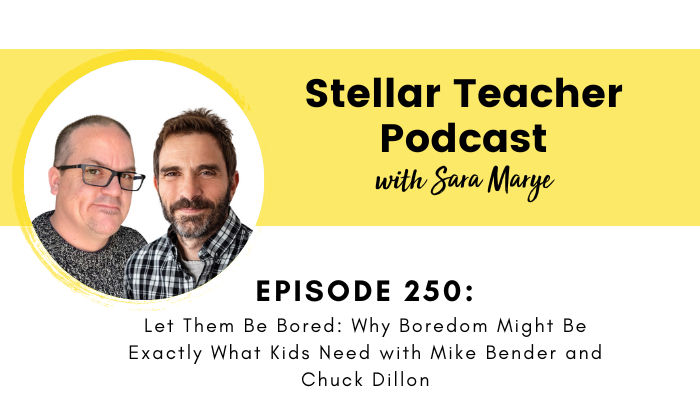
Click play below to listen to why we think boredom should be embraced.
Have you ever had a kid declare, “I’m bored!”—and then look to you to fix it? In this fun and thought-provoking episode, I’m joined by returning guest Mike Bender, author of The End Is Just the Beginning, The Most Serious Fart, and The Bravest Booger, along with Chuck Dillon, the brilliant illustrator behind Mike’s newest picture book Bored Panda. Together, we dive into why boredom might be exactly what our students—and we—need.
We explore the inspiration behind Bored Panda and talk about how boredom can be a gateway to creativity, imagination, and unexpected adventures. Mike and Chuck also give us a behind-the-scenes look at their author-illustrator collaboration, share hilarious stories from the making of the book, and reflect on the role of screen time, mindfulness, and finding joy in slowing down.
Whether you’re looking for a meaningful read-aloud to spark classroom discussions or simply want a reminder that it’s okay to let your mind wander, this episode will leave you inspired. Get ready to rethink boredom—and maybe even celebrate it.
Meet Mike
Mike Bender
Mike Bender is a #1 New York Times bestselling author of Awkward Family Photos. He has written the Junior Library Guild Selection, The Book About Nothing, The End Is Just The Beginning, and The Most Serious Fart. He lives in Santa Barbara with his family and can’t wait for boredom to inspire his next idea!
Meet Chuck
Chuck Dillon
Known for his busy style that blends humor with intricate detail Chuck Dillon’s cartoons have appeared in numerous children’s publications, games, and online for over 35 years. He is a member and two time Silver Reuben recipient of the National Cartoonist Society. He is the illustrator of The Most Serious Fart and The Bravest Booger which were featured on Ryan Reynold’s Bedtime Stories with Ryan. Bored Panda, Mike Bender and Chuck’s new book, will be released April 29. Chuck was born and raised in Philadelphia surrounded by chaos and laughter but he currently lives with his funny family in rural Massachusetts where milk is delivered on Saturdays.
In this episode on embracing boredom, we share:
- Why boredom isn’t a problem to fix—but an opportunity for creativity and imagination
- How the idea for Bored Panda came to life and the message behind the story
- Ways boredom can help students develop resilience, independence, and problem-solving skills
- How teachers can use Bored Panda to spark meaningful classroom conversations
- What author Mike Bender and illustrator Chuck Dillon hope kids (and adults) take away from the book
- How embracing boredom can help students disconnect from screens and reconnect with curiosity
- Creative classroom ideas like “boredom parties” that encourage kids to explore their imagination
Resources:
- Join The Stellar Literacy Collective
- Sign up for my Private Podcast: Confident Writer Systems Series
- Sign up for my FREE Revision Made Easy email series
- If you’re enjoying this podcast, please leave a review on Apple Podcasts!
Related episodes and blog posts:
- Episode 200, How to Make Teaching Writing Easier
- Episode 165, Making Space for Silliness in Our Schools With Mike Bender
- Episode 110, Creating a Positive Perspective using The End Is Just the Beginning with Mike Bender
Connect with me:
- Join my newsletter
- Shop my TPT store here
- Subscribe to our YouTube channel
- Instagram: @thestellarteachercompany
- Facebook: The Stellar Teacher Company
More About Stellar Teacher Podcast:
Welcome to the Stellar Teacher Podcast! We believe teaching literacy is a skill. It takes a lot of time, practice, and effort to be good at it. This podcast will show you how to level up your literacy instruction and make a massive impact on your students, all while having a little fun!
Your host, Sara Marye, is a literacy specialist passionate about helping elementary teachers around the world pass on their love of reading to their students. She has over a decade of experience working as a classroom teacher and school administrator. Sara has made it her mission to create high-quality, no-fluff resources and lesson ideas that are both meaningful and engaging for young readers.
Each week, Sara and her guests will share their knowledge, tips, and tricks so that you can feel confident in your ability to transform your students into life-long readers.
Tune in on your favorite podcast platform: Apple, Google, Amazon, Spotify, Castbox, and more! If you’re loving this podcast, please rate, review, and follow!
Podcast (stellar-teacher-podcast): Play in new window | Download
Sara
Hey, teachers! Welcome back to the podcast. Today’s episode is such a fun one. I’m joined by returning guest Mike Bender, who’s the author of The End Is Just the Beginning, The Most Serious Fart, and The Bravest Booger. And this time, we’re also welcoming Chuck Dillon, who’s the illustrator behind several of Mike’s books. He’s also the illustrator of Mike’s newest release, Bored Panda.
This is our first author-illustrator interview on the podcast, and it was really fun to hear how these two collaborate to bring their meaningful stories to life.
In our conversation, we talk about what inspired Bored Panda, why boredom is something worth embracing rather than avoiding, and how creativity often grows from that place of boredom. We also talk about how teachers can use this story to spark conversations about screen time, imagination, and really—what does it mean to be bored in a world that is filled with constant distractions?
So whether you’re looking for a fresh read-aloud to close out the year or you just want a reminder of what happens when we pause and let our minds wander, this conversation is for you. Let’s go ahead and jump right in.
Well, Mike, I am so excited to welcome you back to the podcast, and I’m really excited for our conversation today because you’ve looped in Chuck. This is the first time we get to have an author-illustrator conversation on the podcast. So welcome to the show—and Chuck, I’m so excited that you’re joining us today as well!
Chuck
Thank you. It’s great to be on here, Sara. Thank you.
Mike
Great to be back.
Sara
Yeah, absolutely. So Mike, I always love when we get to talk about your books because I think they’re equally creative and provide really meaningful and important messages for students and teachers.
Your new book, Bored Panda, is about to come out, and of course, I want to know—what inspired you to write Bored Panda? Where did this idea come from?
Mike
Yeah, yeah. This one is personal to some degree because I have two children—10 and 12—and I think for as long as I can remember, from the time they started speaking, they would express to me—usually not in a happy way—that they’re bored.
And my feeling has always been to kind of push back on that. Instead of running and trying to figure out things for them to do, it’s like, “Okay, you’re bored. That’s kind of cool. So what are you going to do with that?”
And, I mean, Sara, you and I have spoken in the past—my head always seems to flip concepts to some degree, and I think boredom fell into that really nicely. Children often view boredom negatively, and I thought it would be really interesting to write a book where boredom is presented as something exciting—actually a window into creativity.
Sara
I love that. I mean, I remember being a kid and telling my mom the same thing, right? “I’m bored,” as if she was supposed to solve that problem for me. Her response was always, “You must be boring.” Right? Like, “If you’re bored, then you must be boring.” And I was like, “I’m not boring!”
But I love that your response to your kids is like, “Wait a minute, this is a cool opportunity. If you’re bored, what are you going to do with that?”
Mike
Yeah. And I was just going to say—the difference between us growing up and kids today is, when we were bored, we really didn’t have a choice. Maybe we watched TV—you know, I’d watch Diff’rent Strokes for half an hour—and then I was bored again.
But today’s kids? They can hop on a number of different devices, which I think are boredom killers to some degree—but not in a good way.
So I really felt like a book like this had a place in the society we live in because kids do end up on these devices. And there’s something really beautiful about boredom. There’s something beautiful about when we were bored as kids because it allowed us to discover things we maybe wouldn’t have discovered—or even wanted to discover.
It leads to other things, and I think that’s the beauty behind boredom. I want kids to embrace boredom.
Sara
I was going to say, there are a lot of different ways you can interpret boredom—whether it’s a gateway to creativity or something to be embraced rather than avoided. What is it that you ultimately hope kids and teachers take away from this book after they read it? What’s the number one lesson about boredom that you want them to learn?
Mike
I think it’s just to understand that when you start having those pings of boredom, it’s a good sign that you’re about to discover something new. You might get into something you never thought you’d be into—maybe pick up a new hobby, maybe build something, maybe do something creative.
But really, it’s about approaching the feeling of boredom with the mindset of, “Oh wow, this is cool. This is going to take me somewhere I wouldn’t have gone if I hadn’t felt bored.” So it’s about looking at boredom in a different way.
And really, for teachers—encouraging kids to be bored. Like, it’s okay. Put your device down, put the phone down. You don’t need to hop on the computer. Just go outside and be bored.
Chuck
Yeah, and as an illustrator, I say this to people all the time—I wouldn’t be good at drawing if I had been constantly entertained by TV, or whatever was on an iPad or phone. I was always just trying to figure things out.
I’d sit and draw. We didn’t have cable TV until I was a senior in high school. I didn’t have a color television until I was in eighth grade.
Sara
That’s awesome.
Chuck
Yeah, I mean, we just didn’t have much money. But honestly, watching TV or movies never really appealed to me that much. I’d just sit and draw, and I’d read comics.
As Mike said, that’s why we really connected on this story. I felt like boredom is where you find creativity—you figure out something to do.
Sara
Yes! It’s like we always say creativity is something we celebrate, but boredom is something we try to avoid. And yet it’s the thing that leads us to the thing we end up celebrating.
So, I know I mentioned this is the first time we’ve had an author and illustrator on the podcast together, which I think is so cool. I’m always very curious—and I know Chuck and I talked a little before we started recording—but what does the collaboration look like between an author and illustrator when it comes to bringing a book to life?
How did you guys… you know, Mike, how did you take the story, and Chuck, how did you bring that story to life through illustration? Just walk us through what that process looked like for you both.
Mike
I think Chuck and I have a very special and unique working relationship. We’ve collaborated before—on The Most Serious Fart and The Bravest Booger—so we have kind of a shorthand with each other.
Traditionally, when I’ve worked with the bigger publishers, it’s been situations where I write the manuscript, and then it gets sent off to an illustrator, and I have no contact with them. I understand why publishers do that, but I do think something gets lost when there’s a really good connection between a writer and an illustrator.
When there’s trust—like, I’ve said it to Chuck a million times—I trust him implicitly and his instincts. I really look forward to handing off the words to him so he can bring his own magic to it.
And I really think with the two of us, the work gets elevated because of that collaboration. There are ideas I wouldn’t come up with if I didn’t see his illustrations. So in some ways, it’s a shame that more author-illustrator pairs don’t get to have that kind of relationship.
But that’s what makes it so special. Chuck, I’ll let you speak to it too.
Chuck
Yeah, I agree. In the beginning, Mike would send me the script, and I’d read through it. But we’d also talk about it—he’d say, “I’d like to see this on this page, that on that page.”
So I take those notes to heart. And sometimes I’ll think, “Oh, it might be funnier,” or “It might just add another layer to the story if I do this or that.” And sometimes those things happen organically while I’m sketching.
You know, I might draw the idea in my sketchbook and think, “It just needs something else to punch it up,” so that kids are drawn in a little more. Like hiding the butts—other little jokes too. I’ll run those by Mike, and sometimes he’ll say, “Well, no, that’s really going to take away from the book,” or “That could become a conflict later on in the story.”
So it’s great to have his insight in that regard.
Mike
I mean, it’s also worth saying, Sara, that I stalked Chuck to begin with. I was a huge fan during COVID of the Highlights hidden pictures. I was buying them, my kids were doing them—we were all obsessed with those puzzles.
And I started to notice that the names of the illustrators were on those puzzles, written in very small type. But I reached out to Chuck as a result, because all the great puzzles were his. I started to recognize his illustrations.
So I’ve been a fan of his from the very beginning. And I think what makes his particular illustrations so incredible is that he always brings this level of detail I can’t even begin to imagine while writing.
There are layers in his illustrations—anything I’ve ever seen him do, I want to spend time with it. I want to spend five minutes on a page just soaking in all the little details. And I don’t know—I’ve told Chuck he’s a genius many times, but I really think he’s off-the-charts amazing when it comes to that level of detail.
Sara
Well, I was going to say, it’s those details that really draw kids in, right? And so many kids and teachers love to reread stories over and over again—and often it’s because they want to go back and look at the illustrations again and notice the things they missed the first time.
Now, I’m always curious about this because illustrations really do bring the story to life, but I know there are different tones or a kind of “feel” to the art. So when you’re putting it together, Chuck, do you already have a vision—like, “I want this to feel humorous,” or “I want this to be more cartoony,” or “more realistic”?
Or is that something you both talk through and figure out together as you’re creating the vision for the book?
Chuck
Well, yeah, as I said, Mike gives me kind of a general outline of what he wants on each page. But sometimes, when I’m sketching, I’ll do some research for certain scenes.
And, like I mentioned earlier, when you’re illustrating a children’s book, it’s kind of like you’re making a movie—because you’re creating a whole world. Whether it’s the world where Bored Panda exists, or where a fart exists, you have to fully imagine and sketch out that world.
Some things just naturally lend themselves well. Like in The Fart Book, there were tons of jokes that we just never even got to include because there wasn’t enough room.
Bored Panda is a simpler world, but there are still little jokes and details sprinkled throughout. And I always want to make it a joy to look at. I want my illustrations to make people say, “I want to live there. I want to live in that world, wherever it is.”
And I have to remember that as an illustrator, because some illustrators forget they’re making books for kids. You want to include those little elements that your child self would’ve thought were fun or cool—those tiny details that kids will notice and point out. So I make sure to include things like that. It just adds another layer.
Sara
I love that.
Mike
I think Chuck is really good at, in the beginning, when we talk generally about the feel of the book—what’s the vibe going to be? Especially with The Fart Book, that one was a real challenge because we wanted the fart to look classy, you know?
Sara
And it did! It was a very sophisticated fart, illustration-wise.
Mike
Exactly. I definitely just put my trust in Chuck that he’s going to find the right direction for it. That’s out of my area of expertise, so I don’t try to tell him what to do there.
He always finds the vibe of the world and what it should feel like. And that’s where it’s fun for me—to sit back, wait for something to come in, and just enjoy it.
He brings me into the process, he shares everything—it’s truly fun to work like this.
Sara
That’s awesome. It’s a great collaboration. I hope you guys keep doing this, because the books have been amazing.
Chuck
It’s very funny—especially when we were working on The Fart Book—the texts we would send each other were hilarious.
Like, “I think the fart would do this,” or “I think the fart would have legs because they go to dance later.”
Sara
And this is your job. I love this, right? Like, who else has a job where they decide if a fart is going to have legs or not?
I want to talk about some of the specifics in the book. But before we do that, Mike, can you give us just a quick rundown or summary of Bored Panda? What is it about, and what can students expect from the story?
Mike
The book is really about a panda who is kind of allergic to boredom. I always thought of this character as being an “Uncurious George”—for all the people familiar with Curious George books.
So the story opens with Panda playing on his PandaPad—which is like an iPad—and his power goes out. He basically loses access to his devices and is forced to confront his boredom. He tries to get family members to do things with him, but he finds everything they’re doing boring.
His mother kind of challenges him and says, “Why don’t you go take a walk? You never know what might inspire you.” And of course, he’s thinking, “Okay, I’ll do it—but I’m doing it to prove you wrong,” like many kids do with their parents.
But what he ends up learning on his walk through the forest—which is really a metaphor for all the wonderful things that can happen when we let boredom take us on a journey—is that maybe being bored isn’t boring after all.
Sara
I love it. The story is great—it’s adorable. I mean, I’ve loved all the books you’ve written, but this one feels especially timely. In today’s world, as a society, we’re really addicted to screens, so I love the message and how it serves as a reminder that there’s a lot of benefit to embracing boredom.
I’d love to hear from both of you—were there any scenes, either written or illustrated, that were really challenging or especially fun to work on?
Mike
Well, Chuck, you can speak to this too, but I think one of the big ones was when Panda goes into the forest and meets a lot of creatures who are artists. Because again, the book is really about boredom being a gateway to creativity—it opens up a whole world of possibility.
At the end, he walks into what’s essentially a forest art fair. And in my mind, that was one of those things where you write it and think, “Well, I don’t know how the illustrator is going to do this—but they’ll figure it out.”
Chuck, I don’t know if you agree, but I think that was a pretty spectacular page, because you had to actually create the art that these animals made, and it had to feel like a satisfying and meaningful payoff. So I think that was a really challenging spread.
Chuck
Yeah, yeah. I remember you saying that your idea was to have the paintings and photos kind of displayed around a tree—that gave me something to bounce off of.
But as the illustrator, when I was working on that page, I knew the viewer had to feel in awe of what Panda was in awe of. So I thought, how do I pull that off? It took a while, but once we got everything in place—and adding all the characters interacting happily with the artwork helped—it added another layer.
So even if a reader isn’t super impressed by the art hanging on the tree, they’re still impressed by the illustration and everything happening in the scene.
Sara
Well, I think you nailed that scene, because that was one of my favorite pages in the book. I found myself wanting to study all the details—like the dung sculpture, or the paintings. I noticed those little things and wanted to pay attention to both the art and the overall illustration.
Mike
I was just going to say, one of my favorite little details is that Panda’s aunt has a pet snail that he keeps referencing. Chuck added photographs the aunt took of the snail—awkward, posed family photos with the snail.
It’s several levels deep—you really have to catch it—but I didn’t even ask for that. I just love it.
Chuck
That was one of those things… The last picture of the snail is it sitting in a brandy glass, which, if you grew up in New Jersey, New York, or Philadelphia like we did, you saw those. It was usually a couple kissing, printed on a brandy glass—it was always a wedding photo.
I can’t believe Random House said, “Yeah, that’s fine.” But they did.
And you know, the hardest illustrations for me—it’s funny—it’s not the big, elaborate stuff like we’ve been discussing. It’s always the more mundane scenes: like Dad taking out the trash, or Panda just sitting in his room.
Those are the hardest to pull off because you still have to make them interesting, even though the point in the story is meant to feel uneventful. You want the viewer to feel the boredom Panda feels—so there’s a fine line. It has to look boring, but still be visually engaging.
Sara
But you don’t want them to be too bored—to the point where they put the story down at the beginning. I guess that’s sort of the challenge. It needs to feel boring to match the story, but not so boring that the reader is over it.
Chuck
Yeah, other than the first opening spread, the book doesn’t have much background—there’s a lot of white space. But then, when Panda goes into the forest, you’ll notice the illustrations really open up. Suddenly there are things everywhere, and it becomes more exciting to look at. That was something I just thought of while working on it.
Sara
Well, now that you say that, I’m like—oh yeah, I did notice that! But I didn’t consciously realize it. When he goes into the forest to embrace boredom, that’s when the more exciting illustrations pop up. I always love that illustrators are thinking about all of these subtle details that we, as readers, may not even be aware of—but that really add a nice layer of nuance to the story.
Chuck
Yeah, and as the illustrator, a lot of times my job is also to steer the reader’s eye. I have to figure out—where is their eye going to move at this point? What do I want them to see first? What do I want them to see last?
So there’s a lot of stuff that I run by my son, my wife, or a friend—just to see how they react to it. Mike gives me feedback too, of course. But I try to share it with people who have no knowledge of the story, just to get their raw reaction to the illustration.
Sara
I was going to say—so Chuck, I know you’re the king of hidden images. Are there any hidden details in this book? Anything specific readers should be on the lookout for?
Chuck
Yeah, there’s a lot of stuff—especially in Panda’s room. There’s not too much hidden in the forest. The forest is kind of my love letter to the outdoors, especially camping in Pennsylvania when I was a kid. I live now near the New Hampshire border, so a lot of it’s based on New Hampshire too.
But in Panda’s room, there are a bunch of Philly references. I grew up in Philadelphia, so there’s a Tacony poster—Tacony is the neighborhood I grew up in.
And then I usually sneak in a Star Wars reference. With all the toys, I had to. I think the one in the room is a little Yoda on the door.
Sara
I’m going to go back and look for that now—I want to find it!
Chuck
On the bed frame, there’s an R5-D4, which is one of the robots from Star Wars, and then the rest are just toys.
Mike
And also, Chuck—there’s the end pages. When I read the book to kids, I always give special attention to those. And in this one, if you want to do a deep dive into some beautiful Chuck Dillon detail, the end pages are pretty amazing.
You see Panda doing all the different things he ends up exploring after he embraces boredom. I think there’s even a Minecraft reference in there that my son picked up. Is that right, Chuck?
Chuck
Yeah, yeah. My son was just looking at it too and realized, “Oh, you took…”—well, I had to change them a bit because of copyright, obviously. But they’re all kind of nods to things kids play online.
And then at the end, there are just little jokes. Like, there’s a kiwi right above Panda in the end pages—he and the kiwi are pretending to fly, even though kiwis can’t fly. They’re both wearing little pilot helmets from the 1920s or something.
Then there are Canadian beavers playing hockey. Just little things like that that I thought were funny.
Sara
I love it. Again, just the detail. I’m not an artist, so I’m always so impressed by the level of detail illustrators are able to bring to their illustrations.
Chuck
Yeah, we always appreciate it when someone notices those little details—it really does our hearts good.
Sara
How do you guys hope that teachers will use a book like this in their classroom? How do you envision it being a part of their discussions or lessons? How do you want to see this used in classrooms?
Mike
I mean, I pitched the idea to Random House that teachers and classes should have, essentially, like a boredom party—just playing off the idea of approaching boredom as something exciting, which is so counterintuitive, because boredom is usually the opposite of exciting if you’re a kid. But what if you could see boredom as exciting?
So it’s really about having discussions around, “Okay, you’re bored… what are ten things you could do when you’re bored?” That way, kids start to realize, “Oh yeah, it’s kind of limitless. I can do anything when I’m bored.” I think that’s a beautiful way to steer the discussion in a classroom setting.
Chuck
Yeah, I agree. Definitely.
Sara
I love the idea of a boredom party, right? Like a boredom party with nothing on the agenda—just see where it takes you.
Mike
By the way, drawing—what an amazing way to embrace boredom. Anytime you sit and watch a child with just a pencil and a piece of paper, that is the best example of letting boredom just be.
Chuck
Yeah, that’s true.
Sara
So I can imagine, as two individuals who are really in the creative space, you experience boredom in your personal lives. When that happens—or if it happens—how do you work through it? What are some things you guys do when you feel bored?
Chuck
I am very rarely bored. It’s funny—I said to my wife, this was back when I had carpal tunnel surgery on my drawing hand in December. So for a good three months before the surgery, I couldn’t really draw, and then for about three months after, I was just starting to get back into it.
And I said to my wife, Daisy—her name is Daisy—“I think this is the first time in my life that I’ve felt bored.” Like, I had watched all the TV shows I wanted to watch, I’d read all the books… and I just didn’t know what to do with myself.
So a lot of times, I’ll just go for a walk in the woods, or I’ll start doodling as much as I can. I love people watching too—just observing people’s reactions, studying faces, and watching how people do certain things.
I’ve noticed that everyone on Earth is peculiar in some way. There’s not a single person who isn’t unique. I just have a ball with that. I’m going on a cruise next week, and I honestly can’t wait to just sit and watch people interact with life.
And I also love noticing things—especially when I’m walking through the woods—trying to find things I’ve never noticed before. Maybe something about a specific tree or the way the light hits something. That’s always really nice.
Mike
Yeah. And I think it’s important to point out that even though this is a children’s book, it’s just as relevant for adults as it is for kids.
Chuck
Yeah, totally true.
Mike
Adults are just as addicted to their devices as the kids we see. So I think this book is also a reminder for us to embrace the kind of boredom we used to feel as kids. I feel bored all the time—and I’m guilty of jumping on my phone or a device every now and then—but I really try to catch myself in those moments.
Sometimes I’ll just go outside and sit next to a tree, just to see—where does my brain go? I truly believe that every idea I’ve ever had has been preceded by boredom. That’s where my mind can wander.
And I don’t think I’m the only writer to say this, but taking a shower is sometimes the most amazing space for creativity. You’ve got nothing to do—
Sara
Nothing to think about, yeah.
Chuck
Yeah, yeah. There are so many times when I’m struggling with an illustration or coming up with an idea, and I’ll just sit there and hammer away at it—and nothing happens. I’ll get frustrated and angry. And a lot of times, I just need to go take the dog for a walk, or I just need to sit and stare into space, you know? Not physically do anything.
Mike
One of the things that amazes me is that we, as a society, don’t even go to the bathroom anymore without bringing a device. A lot of people sit in there because even that time feels too painful.
There’s something about boredom that forces us to confront discomfort. Because boredom is uncomfortable by nature, and I think we’re all kind of averse to discomfort. But we’re going to face a lot of discomfort in our lives at various times. So there’s something really beautiful about learning to find comfort in that discomfort. And the simplest way to start doing that? Just go to the bathroom—without your phone.
Chuck
Yeah, maybe you’ll think of a book about farts.
Mike
Exactly.
Sara
I love that reminder. This book is created for kids, but the message is just as important for adults.
And I even think about it for myself—when I have nothing to do, I immediately pick up my phone. And I’m like, wait a minute… can I just leave my phone down for a second? Maybe I’ll come up with something more productive, enjoyable, or relaxing—anything other than the endless scroll.
Like we talked about earlier, as a society, we’re so dependent on our phones. We all need this reminder—adults and children alike—that we need to become more comfortable and willing to embrace boredom, because that is where the creativity comes from.
Chuck
Yeah, I used to do this with my son when he was younger. We didn’t let him have an iPad until he was probably eight or nine. But every once in a while, we’d let him play a game or watch a video.
And I would purposely keep the battery really low, so it would just die. I’d say, “Ah, it’s broken.” I hated lying to him, but I’d say, “It’s going to take all day tomorrow for the battery to recharge.”
Sara
“It won’t be ready until next weekend.”
Mike
Clever.
My biggest piece of advice for people is, number one: go to the bathroom—without your phone. And number two—and I say this all the time—when you take a walk, do it mindfully. Leave your phone at home.
Taking a walk and deciding to use that time to take care of all the loose ends you haven’t handled isn’t a walk—that sounds stressful to me. Just go take a walk in the woods.
Chuck
Yeah, take a walk without music or a podcast.
Mike
Just nature. Nature will provide all the entertainment. And I think if you do that, then see how you feel when you come back—it’s almost impossible to do that and not feel better.
Chuck
Yeah. Totally agree.
Sara
Well, I’m definitely feeling more inspired to embrace boredom. Like I said, this book is such a great reminder—it’s not just a message for students. It’s something that adults and teachers can benefit from as well.
Real quick before we wrap up, I always love to ask: If you could go back and give your younger self one book to read—of course, besides one of your own—what book would it be? What would you recommend to your younger self?
Mike
That is a tough question.
Chuck
Yeah, that is a tough question. I always liked P.D. Eastman’s books—Sam and the Firefly, Go, Dog. Go!. I think his name was P.D. I just loved his illustrations. I got lost in those. So probably one of those books—they’re still gorgeous today. I see a lot of illustration now where I’m like, “Oh, you’re trying to imitate that feel and that tone.”
Sara
I love it. A classic. Mike, what about you?
Mike
Well, there’s a book—I don’t think it was super well-known, but somehow it landed in our house. I read it to my daughter, and I just became obsessed with it. It’s called If. Just simply If. Do you know that book, Sara?
Sara
I’m familiar with it, yeah.
Mike
Okay, and Chuck, you would love this book too. The illustrations are incredible. It’s just a series of “What if…”—like, “What if caterpillars had wings?” or something like that. I don’t know why, but every time I sat down to read that book, I got excited about turning the page to see what the next illustration would be. It really was just kind of an exercise in letting the imagination go wherever it wants. And that’s a book that I still want to own for myself and have on my bookshelf. It’s one of my favorites.
Sara
I love it. Yeah, any book that really inspires curiosity is something to hold on to.
Alright, so when does Bored Panda come out? And where can teachers find it if they’re interested in getting it for their classroom?
Mike
Bored Panda comes out on April 29. It’s available wherever books are sold. And I love—love, love, love—when we hear from teachers and educators. I think both Chuck and I are more than willing to work with any teachers or educators out there who want to bring the book into their classroom. I really think it’s a perfect book to spark a classroom discussion around boredom.
Sara
Yeah, especially as we get ready to send our students off into summer. It’s a great end-of-year discussion book.
Chuck
Yeah, we should mention that it ties in with National Screen-Free Week, which is May 5–11.
Mike
Yep, it’s a week that really celebrates putting the screens down and getting outside.
Sara
I love it. Thank you both for creating this story and sharing it with students and teachers. And thank you for coming on today to talk about it. I always love hearing about the projects you’re working on, Mike. And Chuck, I’m so glad you got to join us today.
Chuck
Thank you for having us. We really appreciate it. It was really fun.
Mike
Yeah, thank you, Sara. We appreciate it.
Chuck
It wasn’t boring.
Mike
I hope not.
Sara
I hope that’s what teachers say after listening to this. Alright guys, thanks for joining us!
Thanks so much for joining me today! If you enjoyed today’s episode and are finding value in this podcast, it would mean the world to me if you subscribed and left a five-star positive review. This helps me spread the word to more and more teachers just like you.



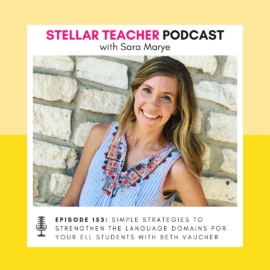
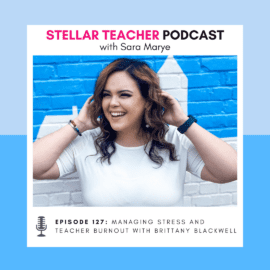
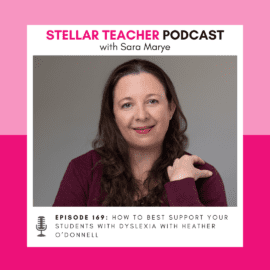
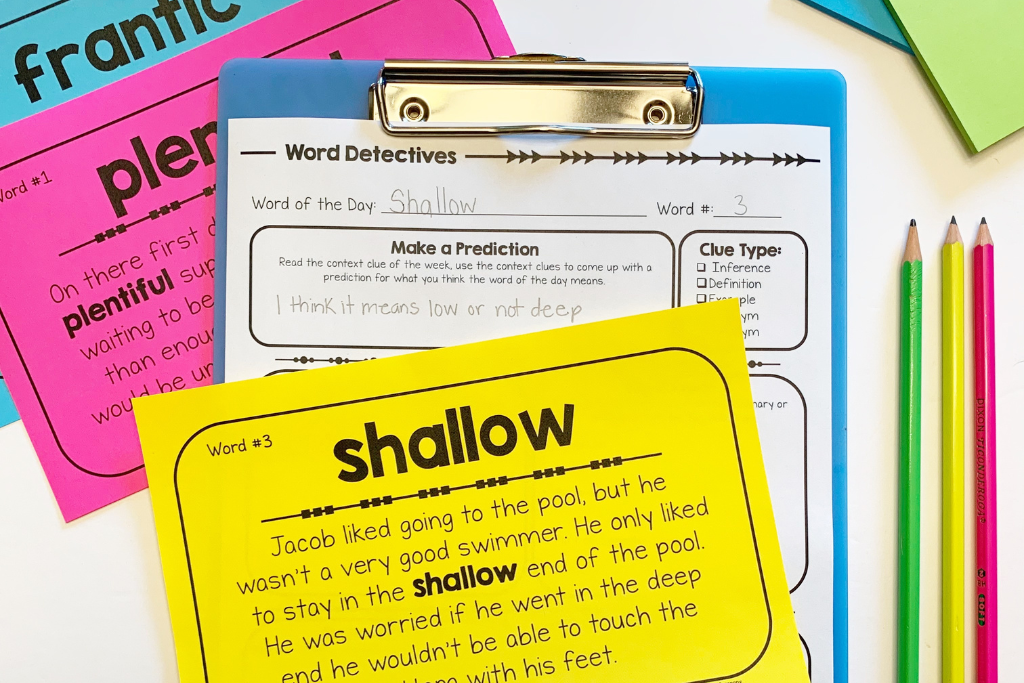

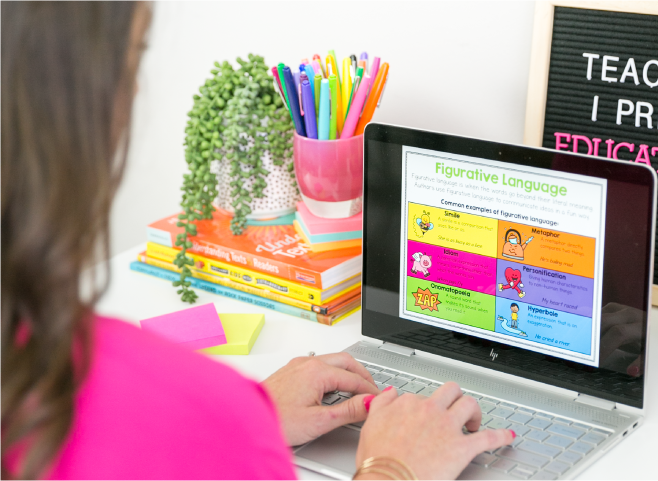
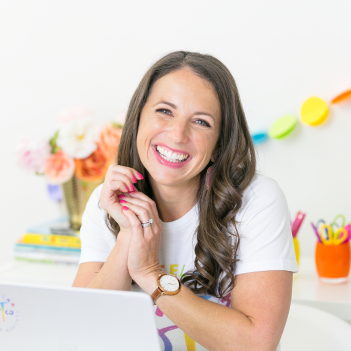
Leave a Comment
You must be logged in to post a comment.